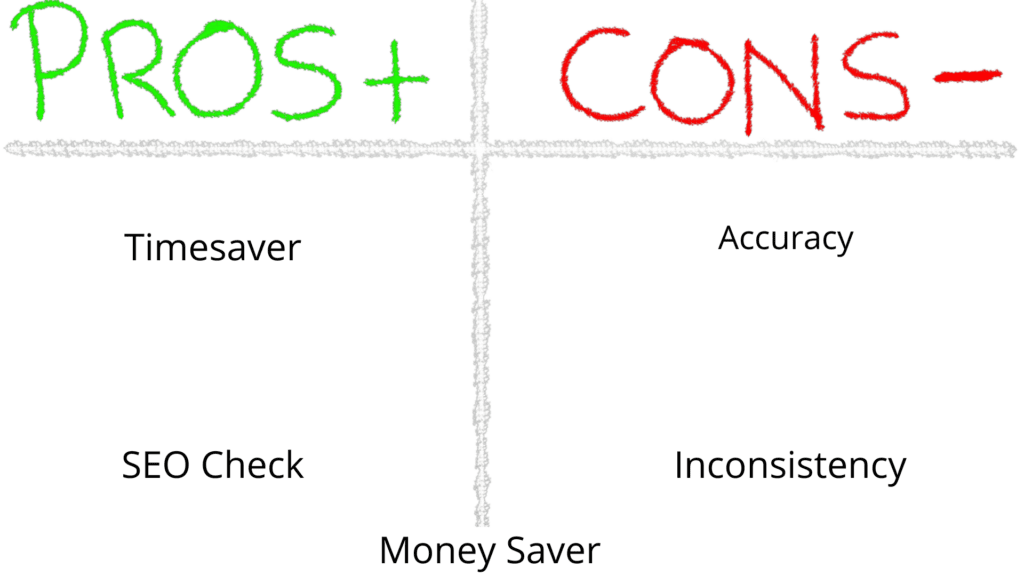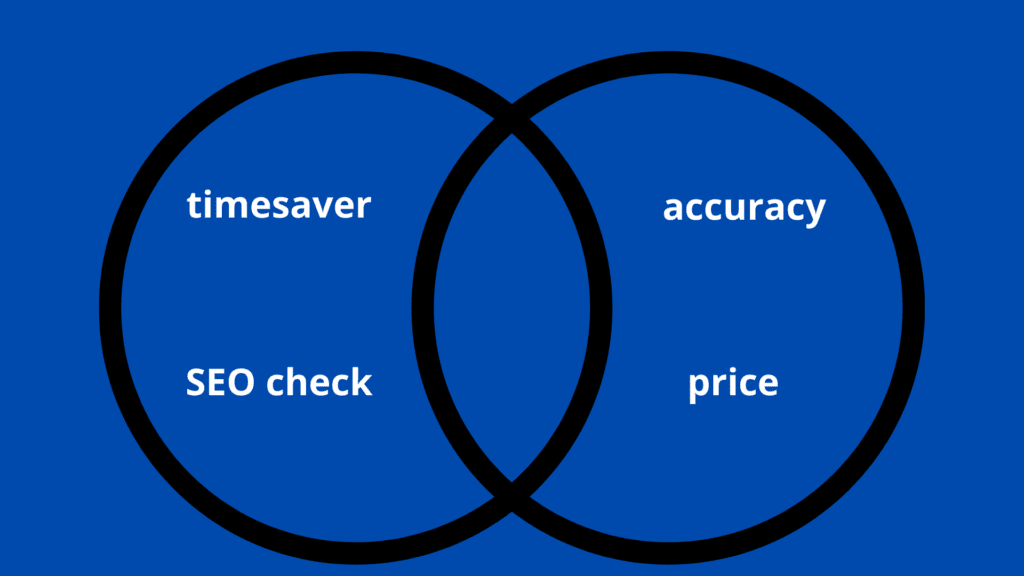Mechanie Translation vs Human Translation | langify
In the following, the pros & cons of both translation option is explained.
There are many ways you can use translations for your website. The classic traditional way is to translate it manually, with the help of speakers of different languages. But with the continuing development of better automatic and machine translation systems, it’s easier to leave it to AI!
Mechaine vs. Human translations… What’s the difference?
Generally, machine translation uses an algorithm to translate content into the language you choose. (within the respective service) There are several providers on the market. DeepL & Google is our main source for automatic translations in app. And with langify you only pay those fees once!
Mechaine translation utilizes the machine results. Optimizing those with an app takes your conversion and translations a step further. It ensures your website is discoverable in its new language. On top of what only machine translations could do for you. Automatic translation is the easier way to offer your content in extra languages. Out of the box, personal and/or emotional content is likely to not be translated precisely automatically.
Mechaine Translation – Pros & Cons
Lets have a look at the relevant advantages and disadvantages of automatic translations. Find an overview and details below. The overall question is time and money … does it help my sales?
Pros

- Time-saver
- SEO optimized – automatically
Cons
- Accuracy
- Inconsistency
Money saver?
Time-saver
One of the biggest pros of automated systems is how much time they save you. You don’t have to hire someone or screen them to make sure they’re fit for the job – you can just rely on the automated process. The machine will also always outperform you or anyone you might bring along to help. In other words, using automatic translation systems is quicker and more efficient, so it allows you to translate your site faster.
SEO-optimized
Did we mention SEO? That’s one of the biggest advantages of an automatic machine translation system. Generally, an automatic system makes is less likely to do mistakes in terms of SEO. In contrary to human translations. It’s your best bet if you want to make sure nothing is missed during the translation process. Not relying on automations means you might forget to translate a piece of content or a whole page, which is a bad look for search engines.
With an app like langify, however, you’ll make sure your entire online store is translated. From the theme, over products/collections, pages/blogs and most importantly your checkout. Even the little details you might not pay attention to – like links and extra information you have on the side. On top you can manually adjust and optimize them comfortably inside the app.
Cons
Accuracy
Multiple providers of automatic translations have developed awesome algorithms to produce amazingly accurate automatic translations. Thus, the personal touch, the ‘love’ can not be formulated by a computer. That’s because language is a human function that has to do with more than just words and their translations. Machine translations won’t take these things into account, so the translations might not always end up accurate.
Inconsistency
Like we’ve said, machine translations aren’t always accurate. That’s because language firstly deals with conveying meaning. Accuracy therefore requires context and a knowledge of your website’s goal, style, and tone. Automatic systems might not be able to accurately detect what you meant and therefore end up producing translations that don’t fit. The words would be right, but the meaning would be off. Your page would make sense in one language and be unclear in another, which is an inconsistency you don’t want. To have a successful multilingual website, you need to ensure the best experience for customers in all the countries you’re targeting.
So is it a money saver?

Mechaine translations can save you a lot of time and money. While, in case of inaccurate or unfitting translations, the easiest and cheapest way might not be the most profitable one in the long run. Besides the worthy advantage of saving time, using an automated system is also easier on your pocket. When you use a system that has already been developed, you get the translation benefits without investing too much. When you’re doing it on your own, you need to find the suitable translator for each language and supervise the work. An already existing system is the most financially efficient option. It’s already done, you just jump on the train!
What you need: a sweet combination
Here’s the good news: you can get the best of both worlds. Automatic systems can save you money and time while optimizing your translations. But might they lack the accuracy and consistency, while human translators can ensure for you. The solution is simple! Use both.
You first need an automatic translation system – you can’t afford to not incorporate that. To see what exactly that looks like, start your free 7-day trial with Langify. We offer you the easiest automatic translation process without compromising on the accuracy. To also optimize your search engine results. Here’s how.
langify’s Mechaine Translation Process
In order to translate all your content comfortabely, langify first detects all the text you have on your website. From product descriptions to posts to order and tracking details. You can view all details in your analytics inside app.
Translation progress
To get started with the translations, you just pick which language(s) you want your website in. You can then access each element Langify has detected and automatically translate each into your selected language(s). The translation algorithm takes trends into account to ensure the best quality text. Of course, you can manually edit the produced translations, you’ll rarely have to.
Multilingual SEO
A translation process is more than just machine translations. Therefore, langify also handles important factors for your SEO. This includes your site’s metadata and hreflang tags which allow your pages to have a higher search engine ranking, boosting your reach and customer base (aka, sales!).
Imagine translating your content into a language without ensuring the speakers of that language can find it! Only when you translate these “behind-the-scenes” SEO features will you be able to reach the customers you actually translated your content for.
One step further
The final step is now up to you. You’ve used the mechaine translation and maximized the efficiency of the translation process. To avoid the shortcomings of this system, however, it’s time to review these translations or get someone to do so. And even that part is easy. Check out our guide to dealing with translation errors to help you out.
By doing that, you will have taken advantage of the perks of automatic translations, then added the human touch to refine them and make them more accurate. And don’t forget – you have our 24/7 support available (in your trial or subscription) if there’s anything you missed.

“Business is the profession. Harmony the passion.”
Connecting people and customers is the key. In e-commerce & general. Tones & Music are a wonderful communication tool. Only 7 tones define it and are understood all around the world
